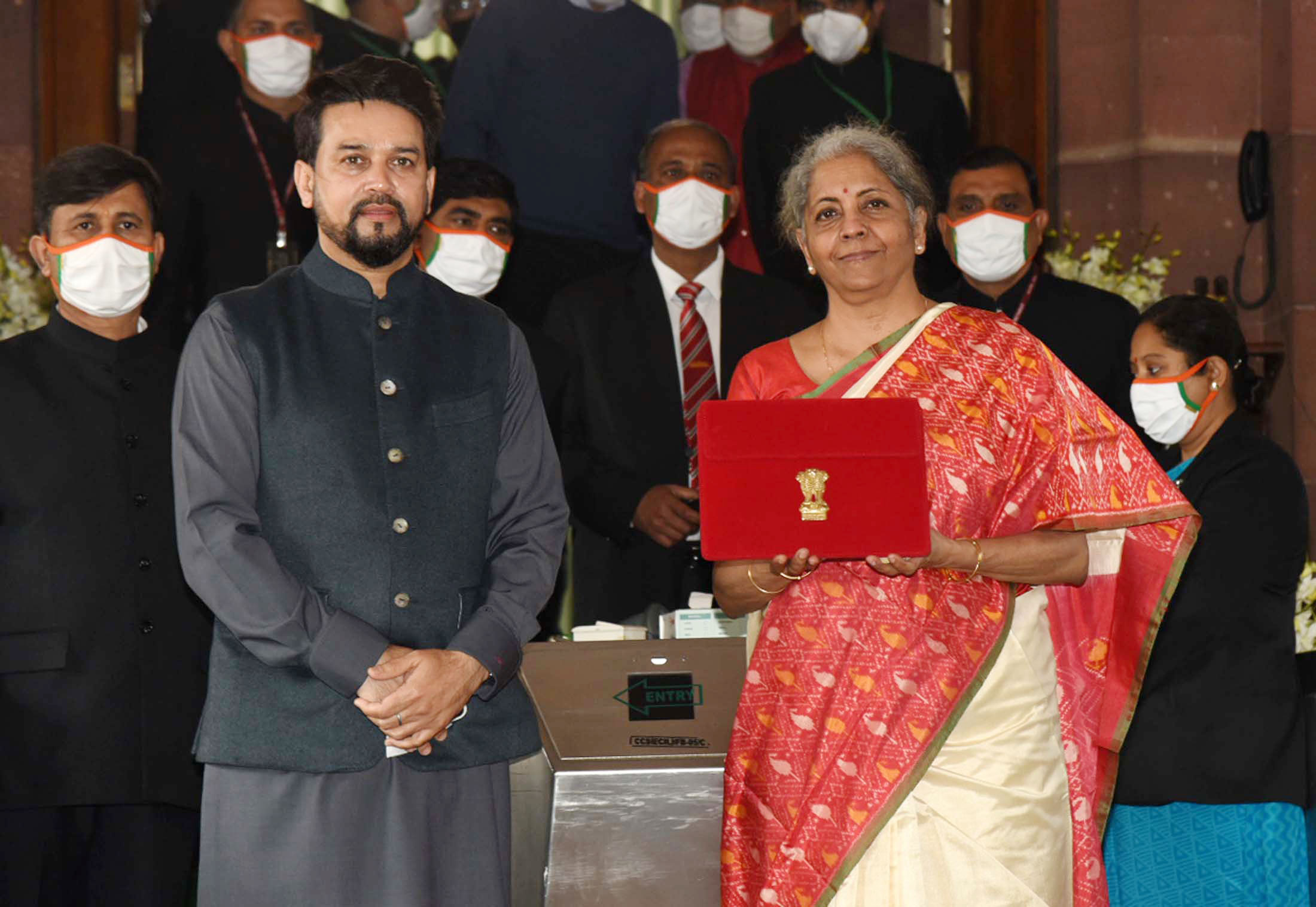Summary
India’s latest budget on 1 February 2021 continued the emphasis on structural reforms. Major reforms like enhancing foreign investment limits in insurance and a strategic roadmap to privatise government enterprises were announced. While the Narendra Modi government feels the reforms are necessary for ‘Atmanirbhar Bharat’ (Self-reliant India), it needs to convince the other major stakeholders.
India presented its latest annual budget for fiscal year (FY) 2021-22 on 1 February 2021. The budget was presented under exceptionally difficult circumstances. The lockdown implemented last year to tackle the COVID-19 pandemic led to a sharp deceleration in economic activity that the country is yet to recover from. Notwithstanding the reduction in infections, the pandemic continues to remain active in India, affecting economic recovery. During 2020, the government announced several schemes to support incomes of displaced workers and maintain the investment momentum in the economy. The economic support provided by the government and the Reserve Bank of India is estimated at around 15 per cent of India’s gross domestic product. The unanticipated expenditures forced the government to spend way beyond what was budgeted. As a result, fiscal deficit, measuring the extent of shortfall in government revenues from committed expenditure, has more than doubled from 4.6 per cent in FY2019-20 to 9.5 per cent in FY2020-21. However, there was no opportunity for the government to step back from committing to more expenditure.
The COVID-19 outbreak was also an occasion when the government announced far-reaching reforms to remove structural rigidities in the economy. The most notable were reforms in labour markets and agricultural marketing. The latter has generated large-scale protests from farmers, particularly from prominent agricultural states of Punjab and Haryana. It is interesting that these protests did not dampen the initiative for further reforms. Some politically sensitive reforms were announced in the budget. These include enhancing foreign investment limit in the insurance industry from 49 per cent to 74 per cent by amending the Insurance Act of 1938; creating an asset reconstruction firm for managing bad debts of Indian state-owned banks; the decision to disinvest two state-owned banks and a general insurance company (names to be announced later); and corporatising the Life Insurance Corporation, India’s largest state-owned life insurance company, by working on its initial public offer. In addition to these reforms, the budget announced a new disinvestment policy that would focus on privatising state-owned enterprises from all sectors, except a few strategic ones.
The proposals have invited criticism, from none other than the Bharat Mazdoor Sangh (BMS), the labour union affiliated to the Rashtriya Swayamsevak Sangh, whose ideological and political links with the Modi government are well known. The BMS has underlined greater infusion of foreign capital spoiling the spirit and vision of Atmanirbhar Bharat (Self-reliant India), which is being championed by the Narendra Modi government as the economic vision for turning around the country. It remains to be seen how difficult it becomes for the Modi government to tackle dissent on the subject. However, there is no denying that the government is not hesitating to move on areas that are essential to be acted upon to kickstart investment. Insurance and banks are important sectors where long-term private investments are necessary to support economic activity, including infrastructure and flourishing of start-ups. Similarly, privatising non-essential, non-strategic state-owned enterprises are also essential. However, this will push the government into areas where, going by the recent example of protests on new farm laws, it can expect considerable resistance, including from its ‘own’ stakeholders like the BMS.
Some other announcements reflect the beginning of movements towards important structural shifts for the economy. These include efforts to address hardships faced by migrants during the COVID-19 pandemic in accessing rations through the one-nation-onecard scheme, which will empower them to access rations anywhere in the country. In an objective realisation of the need of gig and platform workers, who are now prominent segments of the work force, these workers have been provided with social security benefits. There is excitement over the opportunity extended to the Indian diaspora by incorporating ‘one person companies’ – that can get some much-needed funds for micro-entrepreneur start-ups. The focus on the health sector, apart from higher outlays, includes important institutional moves like setting up a National Commission for bringing an Allied Healthcare Professionals Bill, which should improve the prospects of nurses and mid-wives.
The big take-away from the budget is the commitment to structural reforms despite political resistance. The announcement of these reforms underscores the government’s belief that they are not in conflict with the long-term objective of a self-reliant India. The challenge for the government is to convince sceptics likewise.
. . . . .
Dr Amitendu Palit is a Senior Research Fellow and Research Lead (Trade and Economic Policy) at the Institute of South Asian Studies (ISAS), an autonomous research institute at the National University of Singapore (NUS). He can be contacted at isasap@nus.edu.sg. The author bears full responsibility for the facts cited and opinions expressed in this paper.
Photo credit: pib.gov.in
-
 More From :
More From :
-
 Tags :
Tags :
-
 Download PDF
Download PDF


